CHAPTER 5
O U R C O M M U N I T Y S E R V I C E S A N D M O N U M E N T S
B Y D E N N I S W E B S T E R
M O N U M E N T S A N D M E M O R I A L S
❖
A rendering of the original Fort
Monuments are erected to memorialize the sacrifice and recall the memory of those who tread this Stanwix. The National Park Service
hallowed ground. Oneida County is the cradle of revolutionary freedom with bloody battles, strategic replica open today exists on the
forts and buried patriots. Major historical figures from our nation lie buried under hallowed ground.
footprint of the original fort.
Fort Stanwix, in the midst of the city of Rome, represents the time when our country was not yet born and Oneida County but a dream. The original fort was built in 1758 as a means to protect people in the area from French attack during the French and Indian War. British Commander, General John Stanwix, was the person whom the fort was named after. The colonists would rebuild the fort, as it had decayed, and renamed it Fort Schuyler, after General Phillip Schuyler.
On August 1777, the fort stood tall during a twenty-one day siege by British, Canadian, Loyalist and Indian forces. This assisted, along with the Battle of Oriskany, to secure victory at Saratoga, where lack of troop support doomed British forces. Eventually the fort would decay and now structures were built upon the site. In the 20th century, public support in Rome would swell that resulted in a reconstruction of Fort Stanwix which opened in 1976. It remains an educational and tourist attraction to this day and is administered by the National Park Service.
The Oriskany Battlefield State Historic Site showcases the ghosts of freedom fighters that gave their lives to make our country free. The Battle of Oriskany, that was fought on August 6, 1777, is considered a turning point in the Revolutionary War and was one of the bloodiest battles in the war of American independence. A memorial obelisk was erected and dedicated to the patriots on C h a p t e r 5 ✦ 7 3
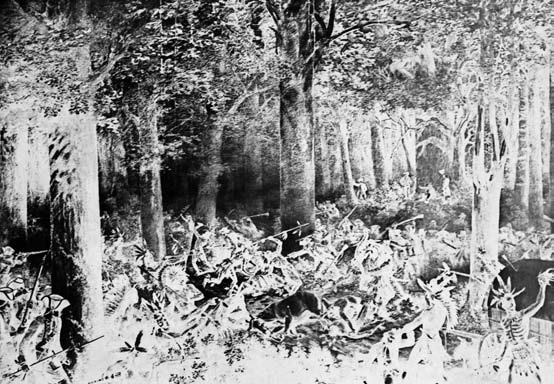

XXON Chapter 5_Layout 1 1/23/2015 1:18 PM Page 74
❖
August 6, 1884. The battle was led by General
Inside are buried famous and illustrious people
Above: The Battle of Oriskany
Nicholas Herkimer, had 800 militiamen and 60
from Utica’s past. Some of those interred include:
was the turning point in the
members of the Oneida Indian Nation who were
• Roscoe Conkling (1829- 1888): At one time,
Revolutionary War.
the only members of the Iroquois Nation to side
Conkling was considered one of the most
with the colonists. General Herkimer would
powerful men in the United States. He had
Below: General Nicholas Herkimer
receive a leg wound that he would die from after
been mayor of Utica, Oneida County District
commanding the troops at the
the battle.
Attorney, United States Senator and had been
Battle of Oriskany after receiving a
Forest Hill Cemetery is a large plot of the
asked numerous times to sit on the Supreme
leg wound.
buried within the borders of Utica that hosts many
Court. Samuel Beardsley (1856-1932): He
historic and powerful citizens of Oneida County.
would participate in the War of 1812, would be
7 4 ✦ O N E I D A C O U N T Y : A n I l l u s t r a t e d H i s t o r y
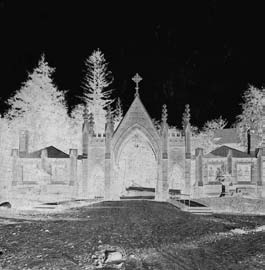
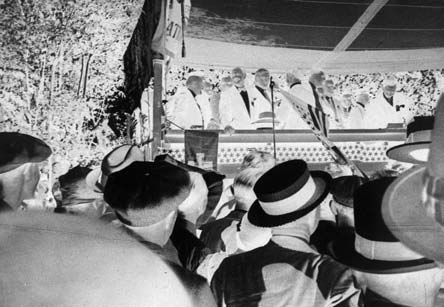
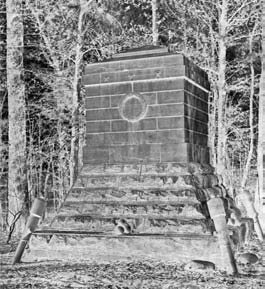
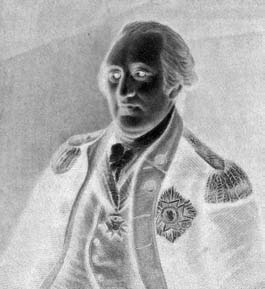
XXON Chapter 5_Layout 1 1/23/2015 1:19 PM Page 75
❖
Top, left: A view of the Gothic-style
gate at the entrance to Forest Hill
Cemetery, off Oneida Street in Utica.
Top, right: Baron Frederich Wilhelm
von Steuben was instrumental in the
colonies gaining their independence
from Britain.
Middle: The Baron von Steuben
Monument
Bottom: The German ambassador
visits the Steuben Monument for a
celebration in 1924.
the Oneida County District Attorney, served as
a United States Congressman, New York State
Attorney General, and Chief Justice of the New
York State Supreme Court.
• John Butterfield (1801-1869): Would run the
company Butterfield, Wasson & Company that
would go on to be American Express. Was
instrumental in the early stages of telegraph
communication. His son Daniel would go on to
be a general for the Union during the Civil War,
was awarded the Congressional Medal of Honor
and would compose the military tune “Taps.”
• Ellis Roberts (1827-1918): Editor of the
newspaper Utica Morning Herald, he was a
member of the United States House of
Representatives, Assistant United States
Treasurer then became Treasurer of the United
States when he was appointed by President
William McKinley. There are dozens and dozens
more people of distinction buried in the
hallowed historic grounds of the Forest Hill
Cemetery.
The Steuben Memorial State Historic Site in
Remsen, New York, is the final resting place of
Baron von Steuben who was instrumental in
America gaining its independence in the
Revolutionary War. Steuben volunteered his vast
military knowledge to George Washington and
converted a rag tag group of colonists into a well-
trained Army. His “Blue Book” manual for training
soldiers is still a guidebook for the modern military.
The Hamilton College Cemetery in Clinton,
New York, hosts the final resting place of one of
the heroes of the Revolutionary War, Oneida
Chief Skenandoah. He was in the Wolf Clan of the
C h a p t e r 5 ✦ 7 5
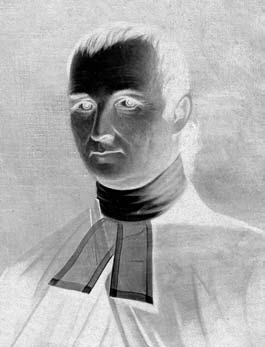
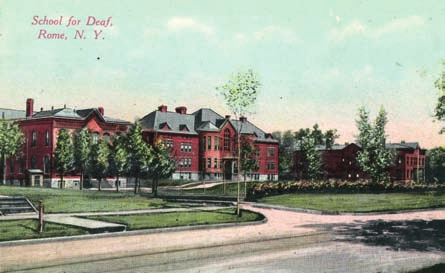
XXON Chapter 5_Layout 1 1/23/2015 1:19 PM Page 76
Oneida Indians and was great friends with Samuel
Kirkland, a prominent local man and Presbyterian
minister. Kirkland worked as a missionary with
the Oneida Indians and founded the Hamilton-
Oneida Academy in 1793, which later was
renamed Hamilton College. Skenandoah turned
the neutral Oneidas into American allies by
sending brave warriors to fight alongside the
colonists. He heard of the starving troops at Valley
Forge and supported George Washington’s men
by delivering 700 bushels of corn. After the war of
independence was complete, Skenandoah went
back to being Chief of the Oneidas and passed
away in 1816 at the reported age of 110. He is
buried next to his lifelong friend Samuel Kirkland.
A solitary gravestone in Ava marks one of the
most remarkable people in the history of Oneida
County. Nathaniel “Nat” Foster, Jr., was the son
of Nathaniel Foster, Sr., who had fought in the
Revolutionary War when Nat was a lad. Nat
Foster was born in New Hampshire in 1766 but
H U M A N S E R V I C E S
❖
moved with the family to the Mohawk Valley
Above: Samuel Kirkland founded the
following the war of independence. Nat was
The seeds of compassion had been planted in
Hamilton-Oneida Academy in 1793
known for his hunting, tracking and shooting
19th century Oneida County with the
that was later renamed Hamilton
skills. He was called an “Indian Killer” based
formulation of patient care facilities: Faxton
College
upon skirmishes he had with several Native
Hospital, Rome Hospital, St. Elizabeth Hospital,
Americans. He could fire a flintlock faster than
St. Luke’s Hospital, Utica Memorial Hospital,
Below: Rome’s School for the Deaf
any man alive and won many contests with the
and Utica Psychiatric Center. This would
catered to the ‘hearing challenged’ and
best marksmen in the colony. He wore a coon
continue in the 20th century with expansion
was one of many service providers
skin hat and buckskins. Nat’s descendants
into specialized human services from the Central
present in Oneida County.
claimed that James Fenimore Cooper based his
Association for the Blind and Rome’s School for
character, Natty Bumpo, from the Last of the
the Deaf, among others. This compassion and
Mohicans on Nat Foster. He passed away in
care for others continues to this day with dozens
1840 and his tombstone is the only one residing
of human service agency not-for-profits that
in the little Quaker Cemetery.
provide love and health that rivals any, not only
in the state or America, but the entire planet.
The Faxton Street Home was started in 1866
by Theodore S. Faxton who had left a bequest
$20,000 to start the home to provide assistance,
care and support to elderly indigent and
homeless women. A small brick house on
Whitesboro Street near Utica State Hospital
would be the host of nine women that first year.
Theodore S. Faxton had a vision that Utica
needed a hospital and partnered with Dr.
Alonzo Churchill to start Faxton Hospital that
opened in 1874. Dr. Churchill would be the first
surgeon in charge and in the year 1889, Faxton
Hospital would see 25 patients.
Rome Memorial Hospital started as a small
healthcare center that opened in 1884 and
7 6 ✦ O N E I D A C O U N T Y : A n I l l u s t r a t e d H i s t o r y

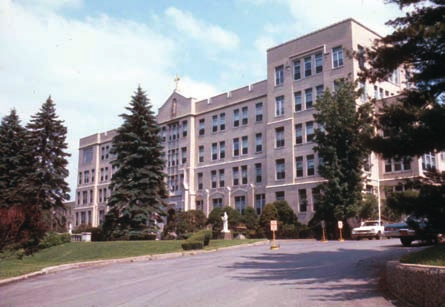
XXON Chapter 5_Layout 1 1/23/2015 1:19 PM Page 77
served 19 patients in the first year. Rome
Hospital would start when a railroad accident
had happened and the injured would be treated
in the private home of Dr. Thomas M. Flandrau
and his wife, Clarissa Foote Flandrau. With no
hospital in Rome, the Bureau of Employment
and Relief would petition the city of Rome in
1883 to start a hospital. The original name was
the Cottage Hospital and admitted its first
patient on April 3, 1884.
St. Elizabeth would be the areas first hospital
as it opened on Columbia Street in Utica in
1866 in a house that had been donated by St.
Joseph Church. It was founded by Mother
Bernardine, a nun with determination who
wanted to serve the community. The first patient
of St. Elizabeth would be Mary McLavey, whose
fee for her week stay would be the sum of
of Dr. Amariah Brigham. The Lunatic Asylum
❖
$1.25. Merger talks between St. Elizabeth
was only the second in the United States and the
Above: Rome Memorial Hospital as
Medical Center and Faxton St. Luke’s Healthcare
first in New York State. It was the result of the
seen in a postcard from the early
began in 2011. If the merger is successful, the
Humane Movement that had been sweeping
20th century.
combined numbers would yield 119,000
Europe. The asylum would take in patients from
patients a year, provide employment for over
all over the state and would be the largest tourist
Below: St. Elizabeth’s Medical Center
4,900 people and have an operating budget of
attraction in New York state during the 1840s.
on Genesee Street in Utica has
$585 million.
The Utica Crib would be invented and deployed
undergone many expansions and
St. Luke’s Home was founded by Rev. Edwin
in the asylum but changes in patient care would
changes over the years.
Van Deusen and opened in 1869. The home was
eliminate the device and the name would
started for needy members of the reverend’s
become Utica State Hospital. Then, in the 20th
parish and a building had been donated by
century, the name was changed to Utica
Truman Butler on the corner of Columbia and
Psychiatric Center. Dr. Brigham started the
Hamilton Streets in Utica. The home was start-
American Journal of Insanity at the asylum and is
ed for the sick and the needy that expanded and
still in publication today under the name the
became St. Luke’s Hospital in 1872. Mr. and
American Journal of Psychiatry.
Mrs. Frederick T. Proctor helped by donating
land on Whitesboro Street and money to build a
structure and furnish it. St. Luke’s would merge
with Utica Memorial Hospital in the 1949 then
moved to Champlain Avenue, and opened in
1957, where the first nursing school west of
Albany was established. St. Luke’s would under-
go another merger with Faxton Hospital, with
talks beginning in 1997 with the partnership
and the newly formed Faxton-St. Luke’s
Healthcare completed in the year 2000. As of
2013, the newly formed healthcare company
would employ over 2,900 people and operate
on a budget of more than $340 million dollars.
Mental health care would be at the forefront
nationally with the creation of the State Lunatic
Asylum at Utica that would open on Whitesboro
Street on January 16, 1843, under the direction
C h a p t e r 5 ✦ 7 7

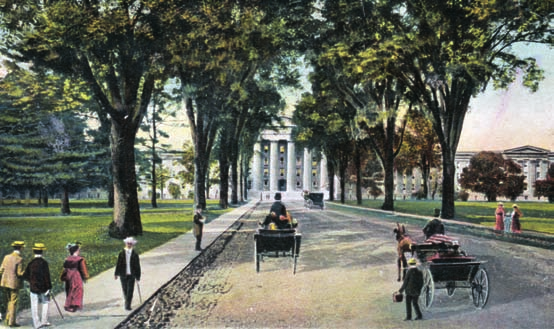
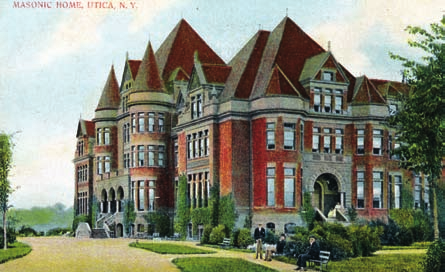
XXON Chapter 5_Layout 1 1/23/2015 1:20 PM Page 78
The Masonic Home was funded by free and
accepted Masons and was built and opened in
1893. Utica was chosen as it was centrally
located in New York state. After thirty years of
operation, the Masonic Home had grown and
had room for 360 adults, dorm areas for
children and a large working farm that provided
crops to be consumed and sold by the residents.
The home is still operated today but is now
called the Masonic Care Community and offers
many kinds of services for seniors, adults and a
camp for children.
Services for the sick and needy of Oneida
County would result in the 20th century
creation of specialized services offered by a new
wave of not-for-profits. The Central Association
for the Blind and Visually Impaired would open
in a building on Bank Place, Utica, in 1929 and
be a beacon of light for those without sight.
Today, the Central Association for the Blind and
Visually Impaired services eight counties and is
nationally recognized as one of the best agencies
for the blind in the nation.
The Mohawk Valley Resource Center for
Refugees based in Utica continues the tradition
of people of all ethnicities and cultures coming
to Oneida County to plant the roots of their
American families. Italian, Irish, German, Welsh,
and Polish from the 19th and 20th centuries
continues today with Bosnian, Somalian,
Burmese, and many more. Oneida County
boasts the country’s fourth highest percentage of
❖
Top: St. Luke’s is one of many local
hospitals that have serviced Oneida
County residents.
Middle: The Masonic Home on
Bleecker Street in Utica has provided
services to the underprivileged and
elderly for over a century.
Bottom: Utica State Hospital—also
known as “Old Main”—was a
popular tourist destination in the
19th century.
7 8 ✦ O N E I D A C O U N T Y : A n I l l u s t r a t e d H i s t o r y

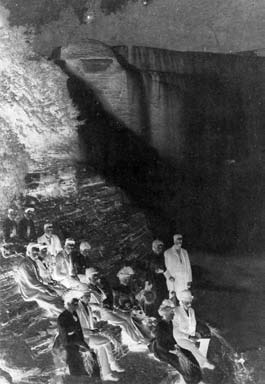
XXON Chapter 5_Layout 1 1/23/2015 1:20 PM Page 79
citizens who are refugees, 12%. Cultural
❖
diversity continues as the refugee center
Above: Trenton Falls was a very
continues to bring new Americans to the area.
popular tourist attraction in the
There are dozens of service organizations in
19th century until it was closed to
Oneida County that offer citizens relief from
the public.
many kinds a maladies and addictions. The
generosity of people of the county assist many of
Left: Patients from Utica State
these organizations with volunteerism,
Hospital on a picnic to Trenton Falls,
dedicated service, and donations.
August 4, 1890.
P A R K S A N D R E C R E A T I O N
The people of Oneida County have always
been blessed with places to go to enjoy the
beauty of the Mohawk Valley. The scenery, water
flow and ambiance of the county is unmatched
throughout the world. In all four seasons, locals
and tourists flock to the parks in Oneida County.
Our area offers all types of recreation from
camping and hiking to learning about the birth
of our nation.
Trenton Falls Scenic Trail offers breathtaking
beauty in its naturalistic topography and a gorge
19th century. The venture started in 1808 when
that is estimated to be 450 million years old.
Joseph Bonaparte, the brother of Napoleon,
Trenton Falls hosts a flowing waterfall that
donated money to blast a trail to the falls. In 1823
attracted flocks of tourists, and all sorts of
a hotel was built and visitors flocked, making the
aristocratic visitors from all over the world in the
falls a must-see that ranked along with Niagara
C h a p t e r 5 ✦ 7 9

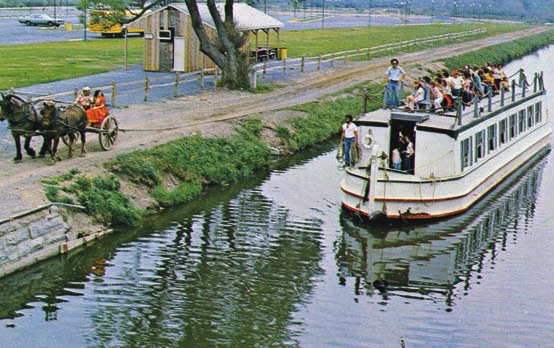
XXON Chapter 5_Layout 1 1/23/2015 1:20 PM Page 80
Falls as a spot to relax and enjoy mother nature’s
basis and thousands flock to take in the grandeur
beautiful grace.
and spectacular scenery.
Moore’s Hotel would prove to be a popular
Erie Canal Village in Rome offers a 19th
destination, yet the falls would be purchased by
century reconstructed museum built on the site
Utica Electric Light & Power Company that built
where the first ground was broken for
a hydroelectric plant in the falls. This caused the
construction of the Erie Canal. The collection of
hotel’s closure, as it was deemed unsafe to have
buildings offer the complete story of the building
flocks of tourists around the plant. Today, the
of the Erie Canal; the New York State Museum
Trenton Falls Scenic Trail is opened on a limited
of Cheese is also on site. In addition there are
❖
Right: The Erie Canal in Rome. The
canal boosted the economy of
Oneida County.
Below: The Erie Canal Village in
Rome has welcomed throngs of
tourists throughout its history.
8 0 ✦ O N E I D A C O U N T Y : A n I l l u s t r a t e d H i s t o r y

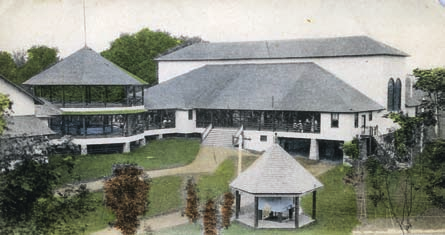
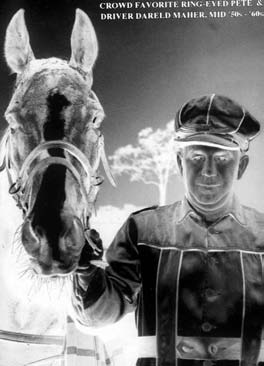
XXON Chapter 5_Layout 1 1/23/2015 1:20 PM Page 81
July 1, 1953. It was the first racetrack to have a
❖
6 furlong track and entertained throngs of fans
Top, left: The rolling waters of
with its magnificent grandstand. On July 16,
Pixley Falls.
1955, a world harness record was set in what
has been termed the “Miracle Mile” when Adios
Top, right: Summit Park in Oriskany
Harry clocked in a time of 1:55. Jack Bailey is
hit its peak in 1910 when 20,000
the all-time winningest driver with an astound-
Oneida County residents welcomed
ing 3,323 victories. Track announcer, and the
President Teddy Roosevelt.
voice of Vernon Downs, Jim Moran spoke and
broadcast an incredible 75,000 plus races that
Below: Vernon Downs has hosted
always included his famous phrase, “Heeeeree
harness racing since the early
buildings that are much like what would have
they come!”
1950s. Seen here are favorite horse
been seen in a 19th century village: an ice
The Sylvan Beach Amusement Park attracts
Ring-Eyed Pete and his driver,
house, blacksmith shop, a tavern, a schoolhouse,
droves of locals and tourists during the warmer
Dareld Maher.
and a church.
months. The park, on the shores of Oneida
Pixley Falls State Park, southwest of Boonville,
Lake, offers everything from rides and games to
offers a stunning fifty foot waterfall and a hiking
trail that accommodates everything from cross
country skiers in the winter to trout fisherman in
the glorious babbling brooks of the summer.
For a brief time, Summit Park in Oriskany
was a place where county residents flocked. In
1897, Seward Baker helped develop an amuse-
ment park in the hills of Oriskany that had a
merry-go-round, roller coaster, miniature rail
road, along with a grand stand, baseball field,
and boat rides for $0.25 per hour. At its peak,
Summit Park had over 1,000 visitors per day
and over 6,000 on the spring and summer festi-
vals like the Fourth of July. On August 23, 1910,
President Teddy Roosevelt paid a visit and spoke
in front of a crowd of 20,000. The park closed
in 1926; while it is long gone and the hills are
covered w























